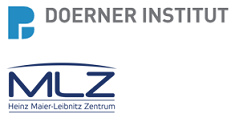Speaker
Description
Abstract:
Cuneiform represents the earliest form of writing developed by the Sumerians in Mesopotamia in the second half of the fourth millennium BCE. It was used for more than three millennia all around the Middle East. The cuneiform signs were typically written by imprinting wedge-shaped impressions into wet clay as a medium of writing. From the middle of the third millennium BCE, people wrote legal documents and sent each other many letters, telling of kings and their reigns, and of the everyday and private lives of families. To protect the clay tablets from damage and ensure confidentiality, tablets were encased in clay envelopes. These envelopes featured the names of the sender, his seal imprint using Mesopotamian cylinder seals, and the name(s) of the addressee(s).
Reading the message required breaking the envelope and, consequently, the artistic seal. However, some letters never reached their recipient and remained within their clay envelopes for thousands of years. The study of enveloped clay tablets serves as an important reminder that unopened heritage artifacts conceal the narratives of their past within both their textual contents and structural integrity. As such, this research aims to explore the application of non-destructive techniques on clay tablets enclosed in envelopes.
Specifically, the research focuses on the utilization of a portable high-resolution X-ray tomographic scanner, designed and developed through collaboration between DESY and the University of Hamburg. This innovative approach enables non-destructive measurement of enveloped clay tablets, allowing us to read the text on the tablet without breaking its envelope or altering the artifact in any way, thereby eliminating the risk of damage. This also includes the development of special feature extraction and visualization tools, including 3D printing of replicas.
The transportable nature of this tomographic scanner allows for in-situ use and deployment in museums worldwide for imaging the interiors of cuneiform letters and other artifacts. The new instrument will be employed for documenting ancient enveloped cuneiform tablets, including those stored in the Louvre in Paris, and for systematic studies in museums and collections around the world.

